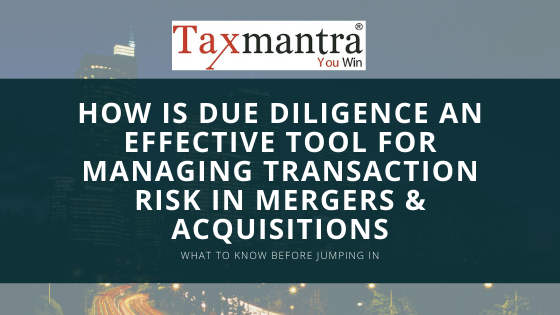
Mergers and Acquisitions are one of the most talked about tools for business expansion. A well known strategy that has made its way through years. However, it is not without its faults. Critics have often batted against this strategy saying that it destroys shareholder’s wealth. The entire process in itself is quiet marred often in its execution. Expectations that have been set out are not often met. Hidden data come to play.
Out of many surveys that have been conducted, studies/books that have been published, some of the major causes have been outlined behind such failures. Strategy flaws, poor internal transaction process and execution, inappropriate price and structure, and an incomplete due diligence on the target company are those major ones.
In this piece, we would focus on the due diligence of transactions part. That is because this is the most easily controllable aspects of an M&A transaction. Easily controllable and the most important to execute. So, how is due diligence an effective tool for managing transaction risk in Mergers & Acquisitions?
Due Diligence is a process that is used to excavate data. As we know, data is the lifeblood of any business. A sound due diligence finds out the loopholes , tracks the target’s earnings, future prospects, find out its leverage. As a result, it helps is creating an executive roadmap for the deal to be a successful one.
Operational Due Diligence
Operational Due Diligence is conducted to expose flaws in the systems, policies and processes of the target company. Internal control systems and audit are something that are often ignored by many business owners. Sometimes that is due to the general lack of awareness. Sometimes that is due to the fact that ISCA is considered dispensable. There cannot be anything more dangerous than this. Financial, tax and legal due diligence unearths quantifiable financial takeaways and hence is more often revered. However, operational due diligence must be given the same amount of considerations too.
Internal systems include policies that are followed for capturing, maintaining, auditing of transactions, IT systems, IP regime, etc. A strong internal process ensures that the data excavated from the financia; due diligence is authentic or at the least, bankable.
Operational Due Diligence include:
1. Due Diligence of IT systems – manner of recording, storing data and its security and accessibility – can identify the scope for upgrades and plugging of leakages
2.Due Diligence of Sales and Marketing efforts and pipelines – how customers are acquired, retained – this can identify cross-sales/upsale efforts, identify recurring lost opportunities, scope for improvements
3.Due Diligence of IP regime
4. Due Diligence of Accounts Payable and Receivables System
TO KNOW HOW TAXMANTRA GLOBAL CAN HELP, YOU CAN REACH US HERE: CFO Advisory Services.
Financial Due Diligence
Now, this is something we are all more or less aware of. Financial due diligence involves audit and analysis of financial data of the target company.
Earnings before interest, tax, depreciation, and amortization (EBITDA) is frequently utilized as a primary measure of economic earnings. However, the use of this metric is now criticized. Unless the company has no working capital, no fixed assets, and does not need to pay income taxes, it may not reflect the cash flows that will be available to service debt or distributed to equity holders.
Financial Due Diligence includes:
1. An investigation of revenue recognition, risk/volatility of sales, verification of reported figures
2.Formulation/verification of crucial ratios and margins
3.Analysis of costs
4.Inventory analysis
A “bridge” analysis is often utilized to determine how sales, gross profit, and EBITDA changed between periods and why.
For a successful M&A transaction, it is important to look at operational and financial due diligence in a comprehensive manner. Along with it, nothing beats the power of human intervention. By actively involving the participants/management of the target company, the transaction can be turned around. Combining both of the above definitely results in a steadfast post transaction plan that gives the best opportunity to fulfill the deal.
_____________________________________________________________________________________________________________________________________
We’re listening:
For any query, support or feedback, reach us at Taxmantra CFO Advisory Services or Call/WA us at +91-9230033070 for any support/query/feedback.
___________________________________________________________________________________________________________________________
_____________________________________________________________________________________________________________________________________
In these troubled times -COVID-19, we, at Taxmantra Global urge you to stay safe – social distancing, personal hygiene and health care are of utmost importance! Stay safe!
___________________________________________________________________________________________________________________________
 customersuccess@taxmantra.com
customersuccess@taxmantra.com Toll Free:
Toll Free:  Contact Us
Contact Us

